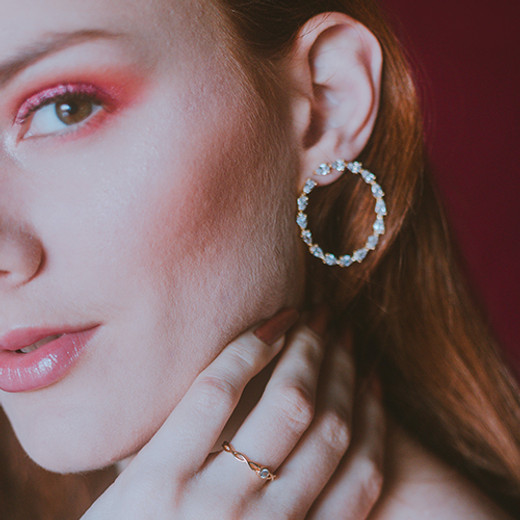I'm Not Blushing! 5 Reasons Your Face is Red and What To Do
Posted by Nikki Wisher on Dec 23rd 2020
Facial redness doesn’t just happen when you let an embarrassing secret slip out or when that hottie with a body sneaks you a smile. Sometimes it’s a persistent, ongoing problem that you just can’t seem to shake. But why?
There are actually several potential reasons for facial redness, and the first step to finding the culprit in your case is learning about the possibilities.
You Have a Skin Allergy
Allergies are strange phenomena. Out of the blue, your body decides that a particular ingredient or product is a threat so it fights that harmless “enemy” with all its power…leaving your skin red and irritated. Allergies can come and go, so just because you don’t have a known allergy or didn’t have allergies in the past doesn’t mean you don’t have one lurking in the shadows.
If your face is red, you could be allergic to an ingredient in one of your skincare products or your makeup products if you wear makeup daily. To figure out if this is the problem, try the process of elimination. Remove one product from your routine for a few weeks at a time. If the redness stays the same, remove another product from the routine for a few weeks. If the redness gets markedly better at any point, you know the allergen is in whatever product you just removed.
When you find the guilty party, replace that product with a hypoallergenic version of it, like a hypoallergenic night cream if your night cream seems to be the trouble-maker.
You Have Sensitive Skin
Some of us have skin that’s just sensitive by nature and it overreacts to products that wouldn’t affect most people. It’s just your skin’s natural temperament, but there are ways around it.
Focus on buying products that are fragrance-free, dye-free, and free from other common irritants. For example, opt for a gentle cleanser that’s specifically designed for sensitive skin. Don’t forget a great, sensitivity-focused moisturizer too, as sensitive skin tends to be prone to dryness as well.
You Have Rosacea
Rosacea is a fairly common but not extremely well-known skin condition. It’s a chronic condition in which the blood vessels below your skin dilate, causing prolonged facial redness. Rosacea’s underlying cause isn’t fully understood, but there does appear to be a genetic link.
While there’s not a way to get rid of the condition itself, the symptoms often come and go in a series of flare-ups. These flare-ups are usually brought on by environmental triggers, like sun exposure, drinking alcohol, drinking caffeine, or any number of other circumstances.
Every person’s triggers are unique, so to find yours, try keeping a flare-up journal to track your symptoms’ ebbs and flows. Look for patterns among foods you’ve eaten or things you’ve been doing. Once you’ve figured out your triggers, you can avoid them as much as possible.
In the meantime, there are products designed to soothe the skin and reduce facial redness, so these can offer a helping hand too. Try a soothing repair mask for example.
You’re Having an Acne Breakout
Before you say, “I don’t see any pimples,” hear me out. Acne can cause intense inflammation across an area of skin, sometimes to the point that it masks individual blemishes. If you look closely at your redness and see bumps, chances are that it’s acne.
If that’s the case, put up a fight with a dedicated acne treatment system, especially if the problem has been sticking around for quite a while.
You Have Bacterial Irritation
We all have bacteria hanging out on our faces to some degree, but sometimes those bacteria get out of hand and cause skin irritation. These bacteria can come from just about anywhere, but often makeup brushes, pillowcases, or (in the COVID-19 era) face masks are to blame.
First things first: start washing these items on a routine basis. Wash or change your face mask after every use. Ideally, change your pillowcase every day, but at least wash it once per week. As far as makeup brushes go, aim to wash those once per week as well.
Now that you’ve cut out the initial source of the bacteria so the problem doesn’t keep building, it’s time to get rid of the trouble-makers that are already there. Use an antibacterial cleanser to combat the bacteria head-on.
Getting Rid of Facial Redness
Without a doubt, some types of facial redness are more persistent and frustrating than others. Still, there’s always something you can do to at least reduce your symptoms and get back to a more even complexion. Start with these tips and above all, be patient and give your strategies time to work. Chances are that you’ll be rewarded with healthier, calmer skin.

